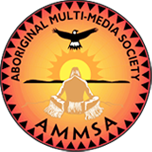Article Origin
Volume
Issue
Year
Page 10
In the middle of the prairie, on a hill about 35 kilometres northeast of Lethbridge, lies the Sundial Butte Medicine Wheel, a mysterious gathering of stones built thousands of years ago. The original purpose of this ancient artifact is shrouded in mystery. And though a huge power transmission line and some nearby gas plants are very visible evidence of modern man's activities, a strong sense of wonder and spirituality is still present.
Like its more well-known counterparts, the Bighorn or Majorville Medicine Wheels, the Sundial site is a place well worth visiting.
Looking out over the coulees and rolling prairie, it's a wonderful place to contemplate the glory and mystery of our ancient heritage.
The term 'medicine wheel' was first applied to a large structure, built solely of rocks, in the Bighorn Mountains of Wyoming. Like many of the 70 medicine wheels that have now been discovered, it consists of a central cairn or rock pile, a series of spokes radiating from that cairn, and an outer circle of rocks, much like a wagon wheel.
The structure was thought to have religious or spiritual significance to the ancient Aboriginal people who created it, but some scientists believe these 'wheels' may also be burial sites of well-known leaders. One theory suggests the wheels were a kind of calendar, marking the solstices and other significant events and astronomical features.
The Majorville Wheel, probably the oldest one known, is thought to have been constructed at least 4,500 years ago, based on dating of the lichen growth on the stones. On the other hand, the Many Spotted Horses Medicine Wheel was built by the Bloods in this century, as a tribute to their great leader of that name. Most of the other known wheels, however, are thought to be hundreds or even thousands of years old.
The Sundial wheel consists of a central cairn, surrounded by two stone circles, thought to have been put in place at different times. Rod
Vickers, plains archaeologist at the Provincial Museum in Edmonton, believes many of the medicine wheels were actually constructed and used over long time periods. An entry way, actually two lines of stones, points east, much as a tipi entrance would be located to line up with the rising sun.
From the hill on which the Sundial wheel is located one can see Chief Mountain, and on a clear day, the Sweetgrass Hills, sites of great spiritual significance. The area around the wheel is dotted with hundreds of small stone cairns and tipi rings, indicating the area was heavily used for camping or as temporary hunting grounds.
Unfortunately, many of the medicine wheels have been vandalized or disrupted as the land was settled, but the Sundial wheel is in relatively good condition. An area ranching family has fenced off the hill, to keep cattle out, and the province has set the site itself aside as Crown land. Recently, an interpretive sign has been places at the bottom of the hill.
To get to the site, however, you have to cross private land holdings, so please be respectful. To reach Sundial Butte Medicine Wheel, drive along Alberta Highway 3 to Coaldale. Head north on paved Highway 845 for about 22 miles. Turn west on country road 522 till you cross the large power transmission lines. Turn left again across the cattle gate and a sign indicating the land is private. This trail will take you back to the power lines. Follow them south for a short way, then turn across the prairie to the bottom of the hill. The cairn on the hill is visible for some distance and acts as a beacon to help locate the site.
- 2666 views
